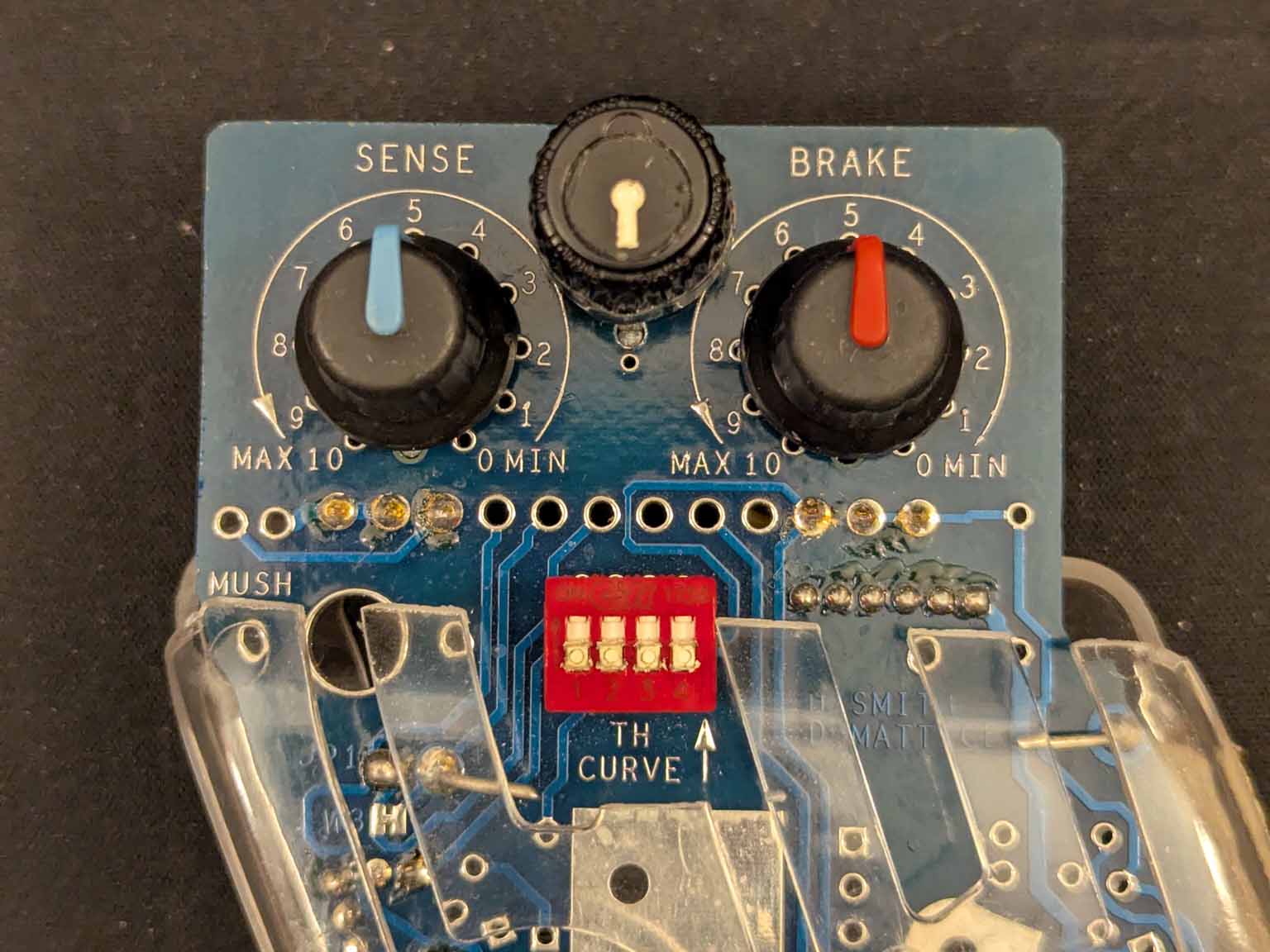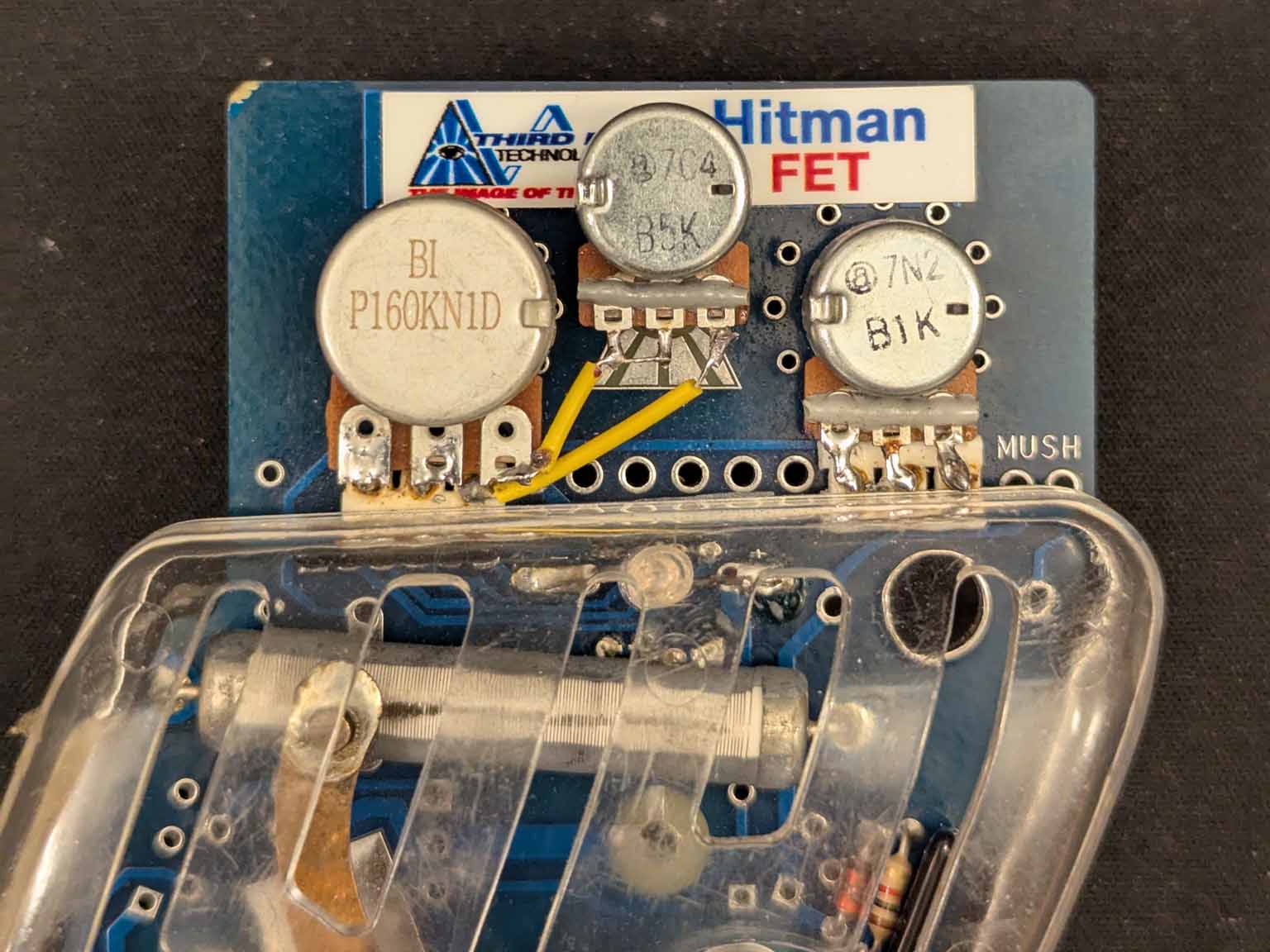
Solving the Third Eye brake sensitivity problem
#1

Posted 02 August 2025 - 11:38 PM
- Eddie Fleming and Joe Maxey like this
#2

Posted 04 August 2025 - 08:12 PM
I haven't explored how Third Eye wires the brake pot, but likely V+ is connected to one end and ground to the other. The pot can then select a voltage between V+ and 0 to turn on the brake FET. Over the years, MOSFET's have been optimized for their major role as switching devices, and for minimum loss, designed to turn on rapidly above their minimum threshold voltage. The FET's I'm currently experimenting with turn on at around 2 volts and are 99% turned on at less than 6 volts. Most MOSFET's are specified to be 100% on by 10 volts. For all practical purposes, the pot range from 6 volts to V+ (12-14 volts) doesn't change the brake response, and the pot range from 0-2 volts doesn't turn on the brakes at all. So as you've noticed, the actual useful adjustment range from no brakes to 100% brakes is less than half the pot travel and can vary with the track voltage. As you've done, adding some additional resistance in the circuit helps put the brake pot into the useful narrow voltage range where it has greater adjustment effect.
This same phenomenon with FET's also effects a FET throttle circuit, and Third Eye has some additional circuitry in their controllers to accommodate this. It's curious why the same additional circuitry wasn't used in the brake function.
- dalek likes this
















